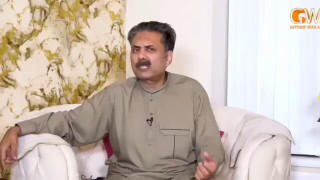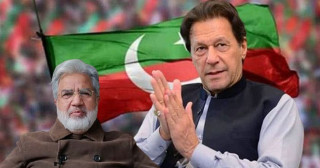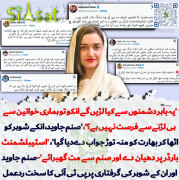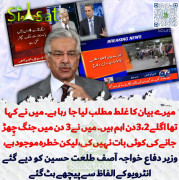Ye kaun hai gora. Inke yaha to roj nayi conspiracy pakane wale hai. Conspiracy walo ko pakad ke lana band karo. Listen to your tv programs and understand the realities. Aise jhute games khelna band karo. Cross examination to ham karenge. Islie we need you to get off your tush and do something about it. Sab kuch to duniya ke saamne maan liya hai tumne. HAHA. modern.fakir saying anything is not important.
The 26/11 Attack, Five Years Later


On the fifth anniversary of the Mumbai terrorist attacks, Prem Mahadevan reviews what has been subsequently learned about their planning and significance. The conclusions? Pakistan's culpability in the attacks is now beyond question and the operation ushered in a 'new normal' in terrorist practices.
By Prem Mahadevan for ISN
Exactly five years ago, ten members of the Pakistani jihadist group Lashkar-e-Taiba (LeT) landed on the Mumbai shoreline. What followed was a 60-hour shooting rampage that became, after 9/11, the most-watched terrorist attack in history. In the years since, it has also become one of the most-studied. The
fifth anniversary of these attacks marks an opportunity to take stock of what has been learned about this signal event, its motivations and objectives, and its implications for security management.
Because of unprecedented counterterrorism cooperation between various governments in the years after the attacks, a great deal of information has subsequently come to light. As a result, “26/11” (as it is now called) is one of the few cases where micro-details about jihadist operational planning, recruitment and training processes are available in the public domain. Three arrests were particularly crucial to this, allowing investigators to identify the perpetrators, retrace their
modus operandi and ascertain their aims. The first of these arrests occurred during the attack itself, when Indian police captured one of the gunmen, a Pakistani national named Ajmal Kasab. The second occurred in October 2009, when US officials arrested a Pakistani-American named Daood Gilani, who had legally changed his name to ‘
David Headley’ in order to reconnoitre potential targets on behalf of LeT. The final arrest was that of Zabiuddin Ansari, a member of the core group that planned and supervised the attack, by Indian police in June 2012.
A new ‘normal’ in terrorism
According to international security experts, the recent attack by Al Shabaab on
Nairobi’s Westgate Mall bore an
eerie resemblance to 26/11. This should come as no surprise: LeT operates an extensive training infrastructure in Pakistan, which it uses to impart tactical skills and operational techniques (developed jointly with Al Qaeda in the early 1990s) to foreign jihadists keen to attack Western nationals. For some time, scattered reports have indicated that LeT is expanding its reach to include east Africa, via Al Shabaab. If true, this would explain the parallel between Mumbai and Nairobi.
In both attacks, a small group of terrorists armed with hand-held assault weapons and commercially-available communications technology, caused significant economic disruption and political trauma to a society in peacetime. Unaccustomed to handling urban combat operations, local security forces failed to effectively respond to a fluid and unpredictable attack pattern. Alarmingly, simulations have revealed that Western law enforcement agencies would have been unlikely to perform much better in similar circumstances. This suggests that jihadists are learning to exploit structural flaws in police and military Special Weapon and Tactics (SWAT) concepts. The key to explaining this tactical innovation lies in understanding how LeT in particular acquired its technical proficiency – i.e., not through in-house experimentation, but through instruction from counterterrorist professionals.
Not just a terrorist attack, but a commando raid
Before anyone outside the jihadist fraternity had even heard of Al Qaeda, Osama Bin Laden was employing former Egyptian policemen and soldiers to train terrorist operatives. In order to boost its own reputation in the international ‘jihadosphere’, Al Qaeda in the late 1980s provided high-quality paramilitary instruction to anyone ready to wage jihad against the West. Over the last fifteen years, LeT – long an aspiring rival of Al Qaeda – has copied this method of self-promotion. Beginning in 1998, the group made concerted efforts to recruit former members of the Pakistani Army –especially the Special Services Group (SSG), a commando force – for this purpose. Training for urban assaults was carried out by ex-soldiers of Zarrar Company, the SSG’s counterterrorist SWAT team.
With this expertise, LeT taught both its own operational planners and foreign students to anticipate how police and military personnel would initially react upon receiving news of a shooting incident. In particular, attack plans were designed to increase confusion among police first-responders and to retain the tactical initiative through the proactive use of fire and manoeuvre. Until Ajmal Kasab and Daood Gilani (aka David Headley) told interrogators about their training in LeT camps, few had realized that personnel from the same Pakistani force that was meant to combat terrorism were actually teaching jihadists how to inflict more damage. Even today, radicalization among SSG soldiers remains a grossly understudied aspect of the Pakistani jihadist phenomenon.
The SWAT hostage rescue concept – which serves as a model for units like the SSG – relies on the assumption that terrorists eventually want to negotiate. Thus, ex-Zarrar Company personnel working with LeT developed the concept of suicidal assaults that continue without any scope for dialogue until terminated by kinetic means. By fighting to the death – and using hostages only as temporary human shields, if at all – terrorist gunmen ensure media attention just as effectively as by holding hostages for ransom. To that extent, LeT is reminiscent of the Mexican drug cartel Los Zetas. With tactics acquired from ex-members of the elite Mexican and Guatemalan army ‘special forces’, the Zetas introduced a new level of professionalism and savagery into gangland killings, which have changed the character of narco-violence in Latin America.
The planners
According to Indian and American officials, planning for the 26/11 attack began on the basis of reconnaissance probes conducted by David Headley in 2006-08. His controller was
Sajid Majeed, a ‘Salafi’ or ‘
Arabized’ jihadist born in 1976 who was keen to undertake some personal brand-building. Lacking combat experience (a prerequisite for leadership positions in the terrorist fraternity), Majeed also wanted to strengthen his credentials within the LeT hierarchy. For Majid, 26/11 was an opportunity to do this, as well as a chance to kill Indians, Westerners and Israelis in a single attack that would capture global attention.
Coordination was handled by LeT military chief Zaki Ur-Rehman Lakhvi. Preparations for the actual attack were supervised by mid-ranking officers from Pakistan’s Inter Services Intelligence (ISI).
US court documents used in Headley’s trial have revealed that of the $29,500 provided to him for surveying possible targets in India, $28,500 was supplied by an ISI officer with the rank of major. Another major from the agency introduced Headley to LeT, and an ISI colonel arranged his training in intelligence tradecraft. Even the method of ingress used by the gunmen – landing by boat, thereby avoiding the heavily-guarded overland border – was chosen by a member of the Pakistani Navy with experience in amphibious operations. Finally, according to Zabiuddin Ansari, the weapons, explosives and ammunition used in the attacks were all delivered by ISI officials to LeT training areas in northern Pakistan. Two officials from the agency were even present in the LeT control room in Karachi, from where the gunmen in Mumbai were managed via internet telephony services.
The cumulative effects of these revelations suggest that 26/11 was not the work of non-state actors alone. During the attack itself, the LeT handlers in Karachi were overheard telling the gunmen that a
general in the Pakistani army approved of their actions. Electronic surveillance later recorded senior Pakistani officials exulting about the number of deaths caused. Although this could have been
post hoc jubilation, Indian and American investigators strongly suspect that final approval for the plan of attack came from a top-ranking military officer who had previously also headed the ISI. If 26/11 was not a state-sponsored act of international terrorism, then it was at the very least state-enabled.
Preventing domestic terrorism by promoting foreign terrorism
This leads to the most puzzling question of all – what motivated the attack? If LeT had been acting alone, then the objective could be easily inferred. Because the attack took place as relations between India and Pakistan were improving after years of hostility, most commentators initially concluded that LeT was out to wreck India-Pakistan rapprochement. As it turns out, there is no evidence that the terrorist group considered bilateral relations while planning its assault, except in predicting (correctly) that political confusion and international pressure would lead India to exercise military restraint, thus allowing the attack to go unpunished.
As the
wealth of subsequent information now indicates, the best explanation for 26/11 lies not in the bilateral relationship between India and Pakistan but in the domestic situation within Pakistan itself. Since July 2007, the Pakistani army had been facing a severe jihadist backlash, the result of its decision to storm an Islamist stronghold and rescue Chinese citizens held captive there. In addition to resulting in heavy civilian casualties, the army’s willingness to attack Pakistani citizens in order to preserve a strategic relationship with Beijing angered virtually all of the country’s jihadist groups.
The one exception, however, was Lashkar-e-Taiba. Pakistan’s most
powerful jihadist organization did not join the rebellion that was brewing against the Pakistani military. In part, its restraint was based on historical ties with the army: the two organizations recruit from the same areas and
many families have members in both. But there were also pragmatic reasons: LeT had a massive above-ground presence in Pakistan and could not afford to jeopardise this by criticizing the military, much less attacking it.
For its part, the ISI’s role in the attack can be explained by the desire to rebuild the military’s lost credibility with jihadists by strengthening its ‘
loyal’ partner, Lashkar-e-Taiba. The means chosen was a cross-border attack that could be plausibly denied and instead attributed to a jihadist organization from India – even if no such organization existed. The evidence suggests that 26/11 was envisaged as a suicidal strike in which all the attackers would eventually be killed by Indian security forces, leaving no hard evidence that they had come from Pakistan. In intelligence parlance, it was designed as a ‘false-flag’ operation, wherein the LeT gunmen would contact Indian television channels and claim that they were acting on behalf of the ‘Deccan Mujahideen’ – a phantom jihadist group that no security agency had ever heard of before (or has heard of since, for that matter).
Three factors prevented deniability from being attained. First, Kasab was captured alive. Speedily interrogated by the Americans, who flew a special team to Mumbai just for the purpose, he confirmed that LeT was in fact the organization responsible. This happened even as LeT spokesmen in Pakistan were strenuously denying any involvement. Second, Indian security agencies scored a major success by identifying the terrorists’ method of communication while the attack was going on, which enabled them to listen in on the instructions coming from Karachi. Finally, the United States leveraged its massive signals intelligence capability to independently collect data which corroborated the Indians’ findings. In their eagerness to create a major international spectacle by micro-managing events on the ground, LeT controllers in Karachi left an electronic trail that destroyed any prospect of the attack not being traced back to Pakistan. The ISI may have overlooked this weakness in the attack plan either because it was so keen for the operation to go through, or because it had calculated that, even if culpability was proven, Pakistan’s nuclear deterrent would act as a shield against any punishment.
Careerism in terrorism
One of the more interesting aspects of the 26/11 conspiracy was the extent of internal competition and petty rivalries among LeT planners. In particular, Sajid Majeed was reportedly desperate to upstage a rival within the group, who had been organizing a successful bombing campaign in India. In the process Majeed jeopardised communications security and played an instrumental role in focusing international counterterrorist efforts against LeT. (Some years previously, he had also been implicated in a LeT plot to attack a nuclear installation in Australia and in 2009, was believed to be planning a Mumbai-style attack in Copenhagen.) This pattern of reckless organizational behaviour raises the question of whether groups such as LeT and Al Shabaab plan their operations according to any coherent strategy, or merely according to the whims of their middle-managers. If the latter is the case, then going after such managers could be a viable means of preventing attacks like 26/11 and Westgate in the future. Nuclear weapons might protect Pakistan-based jihadist groups like LeT from retribution, and indeed elements of the ‘Deep State’ (the military-intelligence complex) who are complicit in jihadist attacks. But they offer no protection to individual terrorist operatives, whose main defence is anonymity and whose operational relevance shall diminish even as their points of personal vulnerability increase with time.






























